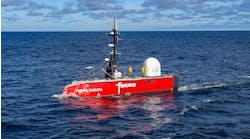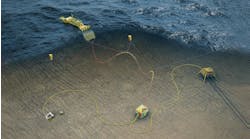In today’s low oil price environment, the “lower for longer” scenario only exacerbates the industry’s need to reduce costs associated with finding and producing hydrocarbons. This requires more than incremental improvements: it means step changes and new ways of thinking and doing business. Earlier involvement from subsea service providers is necessary to effectively reduce the total cost of development. Operators must leverage suppliers’ expertise and increase the efficiency of projects by embracing integrated offerings and standardized processes and equipment. We all need to focus on challenging the status quo and incorporate new approaches and new technologies that can reduce both capital investment and operating cost.
Working with operators in the concept selection phase of front-end engineering and design (FEED) is important. The choice of equipment and field layout can have a significant influence on both initial expenditures and long-term operating costs. Multiple options for field architecture can be examined so that an optimized solution - one that attains the highest reliability and uptime, and the lowest total ownership cost over the life of the field - is agreed upon.
For instance, savings of up to 30% can be realized by integrating the design and reducing the complexity of the subsea production systems (SPS) and subsea umbilicals, risers, and flowlines (SURF). This business model establishes a new way of collaborating between service providers and customers.
Early involvement can also shorten time to first production - sometimes by six to 12 months. Traditionally, SPS and SURF are not tendered until the FEED is well under way. But by being involved early in the concept selection phase, tendering and negotiating can begin much earlier.
Two service providers creating an alliance to deliver an integrated SPS and SURF is a step change, a new way to do business. In addition to reduced costs, the benefits of delivering an integrated SPS and SURF package are improved uptime, standardized hardware and processes, a reduction in the number of subsea interfaces, coordinated installation of equipment, and more efficient maintenance over the life of the field. The operator’s risk is reduced because more of the responsibility for ensuring that all systems will integrate correctly and be put in place on time is held by the alliance, not the operator. This relationship continues into the life of the field, as integrated monitoring of the entire subsea infrastructure allows for the service providers to be preemptively called for necessary intervention and maintenance.
In addition to creating new business models, innovative technology that helps reduce cost, improve cycle times, and increase recovery helps improve operators’ returns. Using the robotic technology available with ROVs and transferring it to create robotics that remain on the seafloor is a disruptive idea. Imagine saving the time of deploying an ROV down and back up to the host facility.
Replacing the orbital welding process used to connect small-bore hydraulic tubing with shape memory alloy-fittings simplifies manufacturing, removes welding inspection time from the process, and drastically reduces time and cost.
Also worth considering is the significant amount of application engineering hours that can be saved if we move from the current “engineered-to-order” model to a one of “configured-to-order.” When operators accept to submit functional requirements rather than technical requirements, suppliers can offer proven solutions that will meet or exceed performance expectations. Pre-engineered, modular solutions can economically accommodate a wide variety of requirements. These solutions can then be configured to meet customers’ project-specific needs.
A configured-to-order model allows suppliers to standardize components and processes. They can leverage the purchase of raw materials in bulk and can source and stock parts more economically. Additionally, this approach increases quality and reliability throughout the entire supply chain.
While a good portion of the cost- and time-saving benefits of standardization is realized during the manufacturing of the project, the payoff continues throughout the life of the field. Standard equipment allows for intervention tooling to be shared from project to project, and it can be installed using the same processes and procedures. It also stands to reason that the more times the same procedure is performed, efficiencies will be found and safety and reliability will improve as well.
By working together, we can help tackle the very real trials of today’s market, while solving longer-term challenges around the cost and complexity of subsea equipment. New business models, integrated offerings, innovative technologies, and standardization provide viable answers and support the increasing demands of the industry.
Tore Halvorsen
Senior Vice President, Subsea Technologies
FMC Technologies


